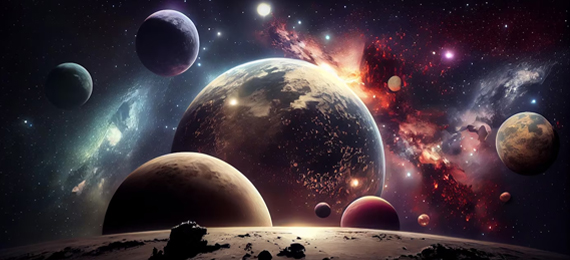
Does the topic sound intriguing? We are sure that the words, “average color of the universe,” kindle your curiosity. Scientists and astronomers alike have worked and are still working to arrive at the color of our universe. When we consider the universe’s color, we must take into account all the galaxies, the stars within them, and the gas and dust surrounding them. Do you know that stars are formed within massive clouds of dust? Now is the right time for you to read what a star nursery is.
You might think that the universe must be bright white, but in reality, it’s not! Many assume that it has to be black because when they look at the night sky, it appears to be black with an expanse of bright stars. But again, there are people who argue that black is not a real color! It’s simply the absence of “detectable light.”
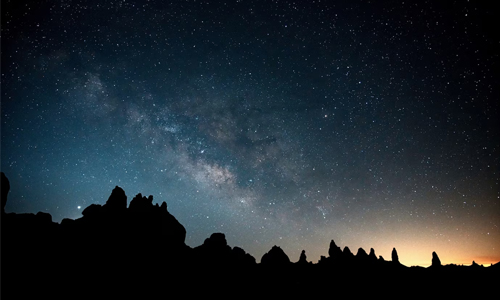
Bright white is the color of the universe.
- A. True
- B. False
Now, let’s start exploring the universe’s color and find out why scientists emphasize that a particular color be chosen as the average color of the universe. While at it, get to know some facts about the planets and solar system if you are the kind of person who marvels at the universe and its components!
Hues of the Cosmos
In the opinion of several scientists, the average color of the universe is beige or closer to beige. Beige is a pale sandy color. You can also call it “pale to grayish yellow.” Like all other colors, beige comes in different shades.
But why do scientists state that the universe’s palette is beige? It’s because there are more regions in the universe emitting red, yellow, and green lights than those emitting blue. Scientists also claim that this beige is diluted across the entire sky.

Cosmic Color Spectrum
Galaxies and the stars within them emit electromagnetic radiation. This radiation is in the form of waves, which are categorized into different groups depending on their wavelengths. The common name given to these groups is “electromagnetic spectrum.” Visible light is a small part of this electromagnetic spectrum. The differing wavelengths of visible light are what we perceive as different colors. For example, purples and blues are of shorter wavelengths, whereas oranges and reds are of longer wavelengths. By studying this cosmic color spectrum or the universe’s color spectrum, astronomers can arrive at color perception in space.
Unraveling Cosmic Color Mysteries
Space coloration analysis has been a topic of interest for astronomers all over the world. In 2002, a couple of Australian researchers converted the cosmic spectrum into a single color by utilizing some color-matching software. The results indicated that the average color of the universe is a shade of beige that is closer to white. Although the outcome of the research is boring, it’s not highly surprising. After all, when we combine all the varying wavelengths of visible light, the end result will be white light!
Thus, the colors in celestial bodies combine to produce an average color of beige.
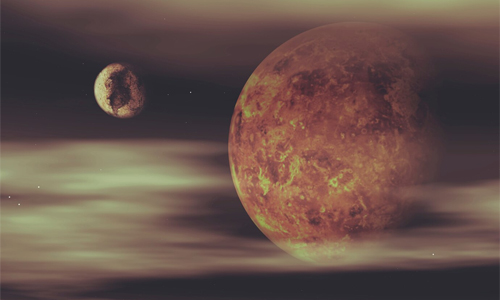
Celestial Color Diversity
Are you a person who is interested in astronomy and stars? Here’s everything you must know about stars! You might be aware of the fact that the majority of stars in our universe were formed nearly 5 billion years ago. And, the color of the universe keeps on changing. One reason for this change is that the stars looked brighter when they were formed billions of years ago. But over time, they gradually became duller, which caused the color change of the universe.
The stars that were initially blue began to turn yellow over the years. From yellow, the stars became red, and so, scientists call them “red giants.” Even though the color of the universe keeps changing, the current color is closer to red. But since it is highly diluted, it’s closer to beige.
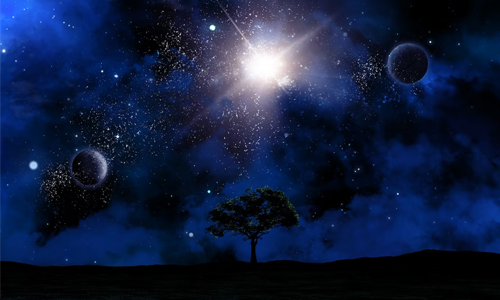
Chromatic Wonders of the Universe
We have already discussed red giants. But do you know how they are formed? Over billions of years, stars become swollen and turn red because they gradually stop fusing hydrogen in their cores. Therefore, a star’s final stage is aptly named the “red giant stage.” In our universe, you can find such red giants throughout the Milky Way, and they are considered one of the universe’s chromatic wonders! Talking about Milky Way, do you know how much dark matter is in the Milky Way?
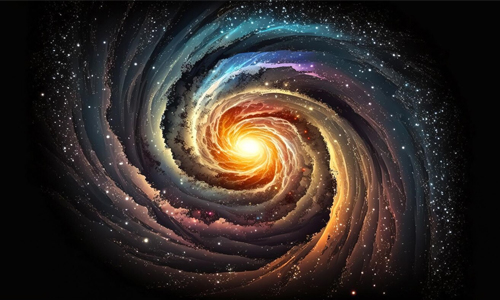
Various Names for the Universe’s Color
The various names for the color of the universe, as given by some scientists, are given below (in no particular order).
- Cappuccino Cosmico
- Cosmic Cream
- Skyvory
- Bing Bang Blush
- Big Bang Beige
- Astronomer Almond
- Primordial Clam Chowder
Perceiving Color in the Universe
Among the list of names provided for the average color of the universe, one stands out. Do you know what it is? According to a team of astronomers from the Johns Hopkins University (JHU), the color of the universe is called “cosmic latte.” This is the average color of the universe as seen from the earth. #FFF8E7 is the hex triplet value for the color, cosmic latte. The term, “latte,” means “milk” in Italian.
Average Color of the Universe – Demystified!
We have now seen the cosmic coloration mysteries. We have also discussed the astronomical color diversity. From numerous research studies, we know that the average color of the universe is cosmic latte. At least for now, it is cosmic latte. However, as we have seen earlier, the universe’s color keeps changing. So, after a few billion years, the color of the universe could be something else!